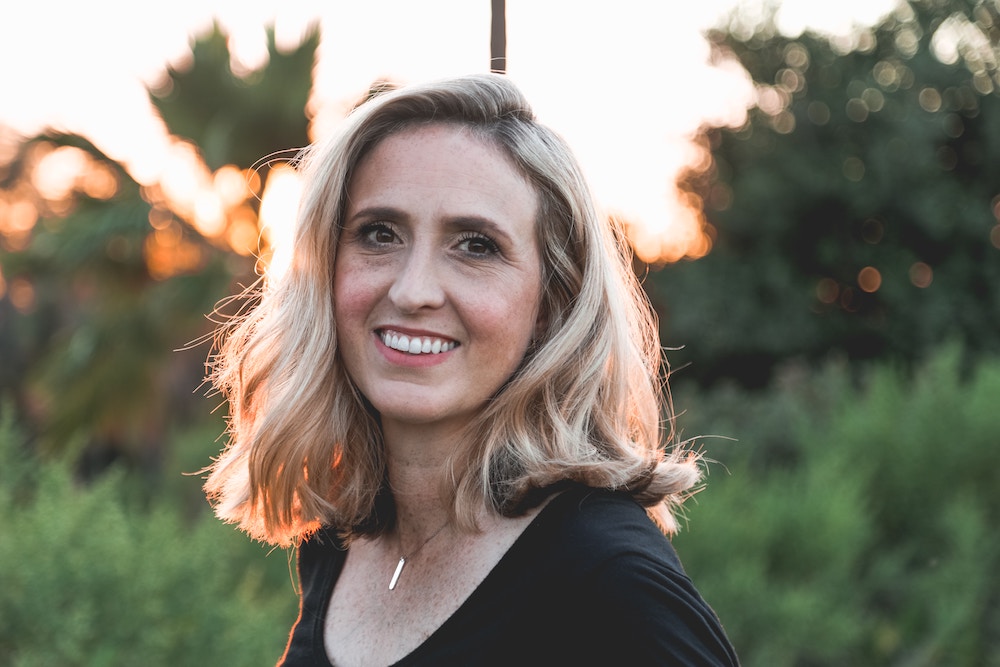Why Your Cosmetic Surgeon’s Experience & Training Matters
With the help of a cosmetic surgeon you can gain confidence and achieve the look you’ve always wanted. However, there’s one major caveat: to get the best results, it’s crucial to find the best cosmetic surgeon near you who has years of experience and training.
It may seem ideal to choose a surgeon and plastic surgery center based on price alone, but you shouldn’t compromise your gorgeous face and body for a “good deal.” Price, whether it’s super costly or super cheap, isn’t the single indicator to how well a surgeon can perform. Instead, you should question surgeons training, their results, and how long they’ve been practicing.
Southlake Plastic Surgery wants our clients to love their results. We pride ourselves on having some of the most experienced medical professionals and doctors on our staff. Keep reading to learn more about why your cosmetic surgeon’s experience matters. As a bonus, we’ll even outline some of our most frequently asked questions about facelifts and breast augmentations to get you started!
What you should know about cosmetic surgery and training
Before you get started, you should understand general information surrounding cosmetic surgery and required training. There’s a lot of misinformation out there, and we definitely don’t want you to get lost in the clutter of jargon and misconceptions. Below are a few common questions you should ask when considering any cosmetic procedure.
What is cosmetic surgery?
Before understanding why training is important, it’s important to understand what cosmetic surgery is and what it entails. Many people clump plastic surgery with cosmetic surgery, but in reality, they aren’t one in the same.
So what makes the two practices different?
The biggest difference between plastic and cosmetic surgery is the purpose of the surgery. As a broad definition, plastic surgery is a medical practice focused on repairing, reconstructing, or replacing different areas of the body. These areas include the:
- Skin
- Facial structures
- Hands
- Extremities
- Breasts
- Abdomen/back area
- External genitalia
- And more
On the flip side, cosmetic surgery uses specific surgical techniques to change body shape, alter facial structures, and/or rejuvenate areas affected by aging. This is where procedures like facelifts, tummy tucks, and breasts augmentations come in.
As a general rule, cosmetic surgery mainly involves improving the physical aesthetic of someone without an underlying condition. Because of this, cosmetic surgery is known as elective surgery. This could impact how much your insurance is willing to cover for the procedure, and it requires you to plan ahead of time for different expenses.

Do all plastic surgeons perform cosmetic procedures?
Cosmetic surgery is a specialization within plastic surgery, so no, not all plastic surgeons perform cosmetic procedures. Here’s what some plastic surgeons won’t tell you (but we will!):
Just because someone is technically a plastic surgeon doesn’t mean they have cosmetic experience.
How to Find a Plastic Surgeon in Southlake →
The truth is, many plastic surgeons choose to get further training in cosmetic surgery, but not all. That means when searching for the best cosmetic surgeons near you, make sure you ask how much experience they have in that particular field. If a surgeon mainly does plastic surgery for hands, you may not want to go to them for your mommy makeover.
Plastic Surgery for Moms in Southlake →
What kind of training does a cosmetic surgeon need?
To be honest, many physicians can claim to be “cosmetic surgeons” since there aren’t many regulations stopping them from doing so. Our biggest tip is to look for a board-certified plastic surgeon who specializes in cosmetic surgery. To gain these credentials, a doctor would have to go through years of specific training, which include:
- Four-year bachelor’s degree (usually in a medical-related field such as biology or pre med)
- Doctorate of Medicine degree (you should always see an M.D. beside a doctor’s name)
- Residency in a related field
- Board certification
If someone claims to be a surgeon but doesn’t have all of the above experience (yes, all), then they simply aren’t qualified for the job. In extreme cases, such as black market surgeries, those “surgeons” aren’t surgeons at all. For your own safety, stay clear of these people (and procedures), no matter how low the price is.
So let’s talk about residency training. After completing medical school, a surgeon must go through an accredited residency program. Accreditation has to come one of these three organizations:
- Accreditation Council for Graduate Medical Education (ACGME)
- The Royal College of Physicians and Surgeons of Canada
- The American Dental Association
Board certification is also key to finding the best of the best. Most people don’t realize that you don’t have to be board certified to perform cosmetic procedures, but a surgeon who cares about becoming the best will take on the extra training.
You want to make sure your surgeon’s board certification matches the procedures they perform. A cosmetic surgeon can say they’re board certified, but their certification could be a field completely unrelated like dentistry. Therefore, for any of your cosmetic procedures, you should find a surgeon who is either board certified by the American Board of Cosmetic Surgery or the American Board of Plastic Surgery.
At Southlake Plastic Surgery, both of our plastic surgeons are board certified by the American Board of Plastic Surgery.
Which procedures do cosmetic surgeons perform?
It’s important to understand which procedures cosmetic surgeons perform. That allows you to gauge whether the surgeon you’re looking at not only has the training, but also the experience necessary to achieve phenomenal results.
Types of cosmetic plastic surgery procedures:
- Breast Enhancement (i.e. breast lift, breast augmentation, and breast reduction)
- Facial Contouring (i.e. chin augmentation and rhinoplasty)
- Facial/Skin rejuvenation (i.e. facelift, brow lift, body lift)
- Body contouring (i.e. liposuction, tummy tuck, and fat grafting)
How to Find the Best Fat Reduction Treatment in Southlake →

Breast enhancement surgery frequently asked questions
Breast enhancements are very common cosmetic surgery procedures that require a specialized attention to detail and years of experience. Here are just a few questions our surgeons receive about different types of cosmetic breast surgeries.
How do I choose the right size breast implants?
Choosing the right size breast implants is crucial whenever you get a breast augmentation. Since there are a variety of factors that come into play, going to an experienced, highly trained surgeon will help you make the right decision. These factors include your goal size and your anatomy before surgery (a trained surgeon will take detailed measurements of the width and base of your breasts). From there, your surgeon will come up with an implant size that’s perfect for your body and goals.
Which types of breast implants can I choose from?
For breast augmentations, there are two main types of implants you can choose from:
- Saline implants
- Silicone implants
Other options, such as “string implants” are not safe, and in some cases they’re illegal.
Saline implants
Saline implants are silicone shells filled with a saline solution (mix of sodium chloride and water). The amount of saline inside the shell affects the feel, firmness, and shape of the implant. If the saline happens to leak, your body will naturally absorb and eliminate the solution. Saline implants are a little more rigid and may have problems with rippling at times.
Silicone implants
Silicone implants are silicone shells filled with a silicone gel. Many women feel that silicone feels more natural than saline implants, and they also may last longer. If silicone leaks, it’ll either stay in the shell or leak out into the breast implant pocket. A silicone leak doesn’t come with symptoms, so it’s important you get MRI scans every two years to catch one.
How do you insert breast implants?
There are a number of ways your surgeon can insert breast implants:
Inframammary incision: An inframammary incision is a small incision in the crease under the breast that leaves a 1 to 2 inch scar. It allows for a wider access point for larger implants.
Periareolar incision: A periareolar incision is an incision around the nipple, specifically the edge of the areola. This ensures that the scar will be in the natural transition between your skin tone and the color of your areola. Since this incision permanently affects nipple sensation, you may not be able to breastfeed later on.
Transaxillary incision: Transaxillary incisions are incisions in the armpit. Your cosmetic inserts the implants using specialized cameras and instruments. As a result, you won’t have an actual scar on or around your breasts. Keep in mind, these incisions have a higher infection rate, and the breasts typically sit high for a longer period of time.
At Southlake Plastic Surgery, Dr. Mason prefers an inframammary incision for his surgeries because it has a lower infection rate and the scar heals extremely well (which is a huge bonus for women concerned about scarring). Plus, the incision disturbs the nerves to your nipple the least, so if you want to breastfeed in the future, you shouldn’t have a problem!
How do you determine whether or not I need a breast lift with my augmentation surgery?
We determine whether or not you need a breast lift with your augmentation based on the amount of breast skin you have and how low your breasts naturally sit. If you have too much breast skin and/or your breasts sit too low, you’re probably going to need a breast lift, too. Only an experienced cosmetic surgeon will understand how to properly assess the nipple position in relation to the crease below your breast.
Will I have scars after a breast enhancement surgery?
Yes, you will end up with a small scar after a breast enhancement surgery. Anytime there’s a cut in your skin, it will scar—it comes with the body’s natural healing process. However, a great surgeon uses techniques that will make your scar thin and less noticeable.
What can I expect with the breast augmentation recovery process?
The breast augmentation recovery process at Southlake starts the moment you wake up from surgery in a sports bra. For the first two days, we ask that you don’t take a shower, but afterwards it’s safe to get everything wet.
You will have four layers of stitches, but the only thing you’ll be able to see is a small piece of tape called a steri-strip. After about seven or eight days, you’ll return to our office so we can take the strip off and teach you how to care for your scar.
As your body recovers, make sure you don’t do anything that involves heavy lifting or activities that could strain your pectoral muscles. This will limit swelling and promote a faster recovery.

Facelift frequently asked questions
Facelifts are an extremely sought after procedure that can really transform how you look and help you appear years younger. But with the internet and false claims, it can be hard to understand the ins and outs of facelift procedures. Fortunately, our team has put together a few common questions to help you out!
Which Facial Surgery in Southlake Should I Consider? →
What is involved with a full facelift?
We are going to do a little mythbusting here. Many people believe a full facelift involves everything from the forehead down—that’s not correct. In reality, a true facelift only involves rejuvenation of the cheeks and neck.
What age will I need a facelift?
Well, everyone ages differently, so there’s no one set age you will need a facelift. In fact, we’ve performed the procedure on patients as young as their 30s and as old as their early 80s. Underlying factors such as smoking, skin elasticity, sun exposure, and genetics all play a role in how quickly you age and how soon you’ll need a facelift. At the end of the day, age isn’t really important. The most important question you should ask is, “Do I have the facial and neck age-related changes that would benefit from a facelift?”
What is the recovery time for a facelift?
Great news! The recovery time for a facelift isn’t usually based on pain since it’s not a horribly painful procedure. Instead, recovery is based on the amount of bruising and swelling. Of course, some patients will bruise and swell more than others; some may not swell much at all. However, for the first week, you’ll probably want to stay home, but you should feel better by the second week (though, you still may not look as good as you’d like). After about 3 to 4 weeks, you may feel more comfortable going out in public without people knowing you’ve gotten work done.
But don’t worry! Our team can help you with makeup and camouflage techniques that can get you out in public faster.
How long will my facelift last?
Since our cosmetic surgeons have decades worth of experience and training, your facelift should last at least 10 years. Basically, we’re setting the clock back, but we aren’t completely stopping the aging process (though we wish we could!). So as time passes, you will continue to age, but you’ll probably continue appearing younger than your actual age.
Find the best plastic surgeons near you at Southlake Plastic Surgery
If you want the best results for your cosmetic procedures, our expert team is here to help. We are an award-winning facility that always puts the needs of our patients first, ensuring we achieve your aesthetic goals.
Dr. Mason is one of the most experienced plastic surgeons in the Southlake area and is certified by the American Board of Plastic Surgery. So with us, you’ll always get the gold standard of treatments.
Ready to get started?
We offer a variety of plastic surgery procedures to get you closer to your aesthetic goals. Use our virtual consultation tool to discover the best next steps or contact us today for more information!


